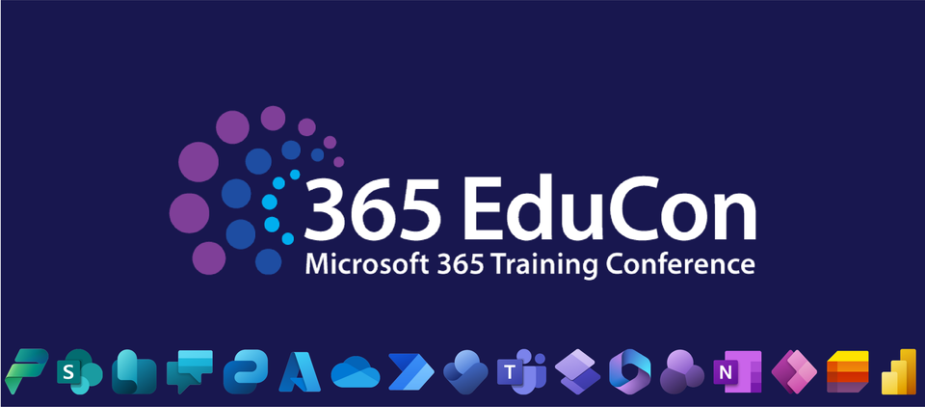At AMSG, we are committed to helping customers meet their business and technical needs. One of the ways we do this is by implementing tailored solutions for Microsoft 365 platform services, Power BI, and Power Apps. In December 2021, we attended the EduCon 365 conference held in Washington, D.C. The presenters each had interesting points of view and were passionate about their topics. There was a good variety of topics including Power Apps and Power BI presentations. While the sessions did not provide a deep dive into the products or specific use cases, the conference provided useful information that prompted innovative ideas and action items. The following is a recap of key takeaways from the conference:
Microsoft 365 Rapid Evolution
Microsoft has undergone and continues to pave the way for customers to bring change to their businesses and organizations. Many have transitioned to Office 365 tools and services, so there is no doubt this trend will continue as incremental innovations and improvements evolve and shape the Microsoft 365 roadmap.
Written by: Monica Chung
Power Platform Services: Opportunity for Impactful Change
What really stood out as a common theme across multiple power platform sessions (specifically focused on Power Apps, Power BI, and Power Automate) is the rich and robust integration possibilities of these products. O365 Power Platform Services and SharePoint Online seem to have closed the gap on business continuity issues, data workflow processes and more.
Whether it’s managing and tracking IT assets, overseeing multiple projects, or modernizing an old InfoPath solution, the flexibility of Power Apps business logic and workflow capabilities can be applied to several types of use cases for any organization.
Using Power Apps, Power BI, and Power Automate together creates a cohesive and simplified user experience. One of the biggest advantages with this integrated solution is the ability to quickly adjust the source data directly. You are also able to easily share and respond to information, such as reviewing a quarterly dashboard, identifying issues, or tracking trends that need further discussion. This easy accessibility was also emphasized across several EduCon sessions.
Office 365 Tools and SharePoint Online: Collaboration at its Best
It is evident that Microsoft wants to move away from SharePoint On-Premises to an online subscription model, and I can understand why. Combined with Office 365, SharePoint Online provides a sleek, centralized, collaborative, and controllable content management system. Tools such as OneDrive and Microsoft Teams give businesses and organizations the ability to connect documents, information, employees, and projects. While SharePoint On-Premises has its merits, the message at EduCon 365 was that combined, Office 365 with SharePoint Online optimizes on greater integration capabilities which can be configured to meet business and functional needs.
Modernizing SharePoint Site Architecture
Presenter Mike Maadarani, a seasoned SharePoint Architect and Microsoft MVP, provided key takeaways in building an effective digital workspace in SharePoint Online.
Modern “flat” site architecture is the way to go
As many businesses and organizations have embraced Office 365 and its benefits, this also serves as a great opportunity to reassess approach to intranet site structure. Rather than hierarchical (sub-sites or nested sites), there is strong advocacy for “flat” SharePoint sites, which basically means a site that is part of a site collection, which can be associated with a “hub” site. This allows for greater control over navigation structure, easier site management, and better adaptability to changes.
Ability to adapt to changes
Sometimes things don’t go according to plan. What if there’s a reorganization in the company? What if there is a need to quickly change permission settings due to offboarding or onboarding employees? This is where modern site architecture really helps by allowing organizations adapt to evolving needs. Whether its managing permissions, branding, data storage, or updating features, it’s a major benefit to be able to quickly manage and control site changes while removing the guesswork.
Better governance in a “flat” structure
In preparing a SharePoint intranet site, it is important to consider site governance. What is particularly beneficial when managing governance using a “flat” structure is if changes need to be made to a site collection, it doesn’t impact another site collection. Also, when it comes to roles and responsibilities, this type of structure allows one to designate site management and accountability for specific content or make navigational changes without major impact.
Although not covered during this session, Power Apps, Power Automate, and Power BI can be integrated with SharePoint Online to streamline many types of business processes, which is major added benefit to an organization of any size.
The overall takeaway from EduCon 365 2021 is that O365 and Power Platform Services has already made a global impact and is the catalyst for digital disruption. Continued innovations and improvements to components and features can help your business take it to the next level.
Currently at AMSG, we are working on a prototype of a portfolio management system and quality control processes while exploring SPFx, which is a framework designed to add logic to SharePoint sites. Talk to us, today, if you have use cases where we could help you use the O365 and Power Platform Services to optimize your business practices.

